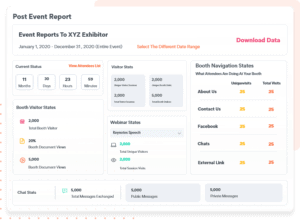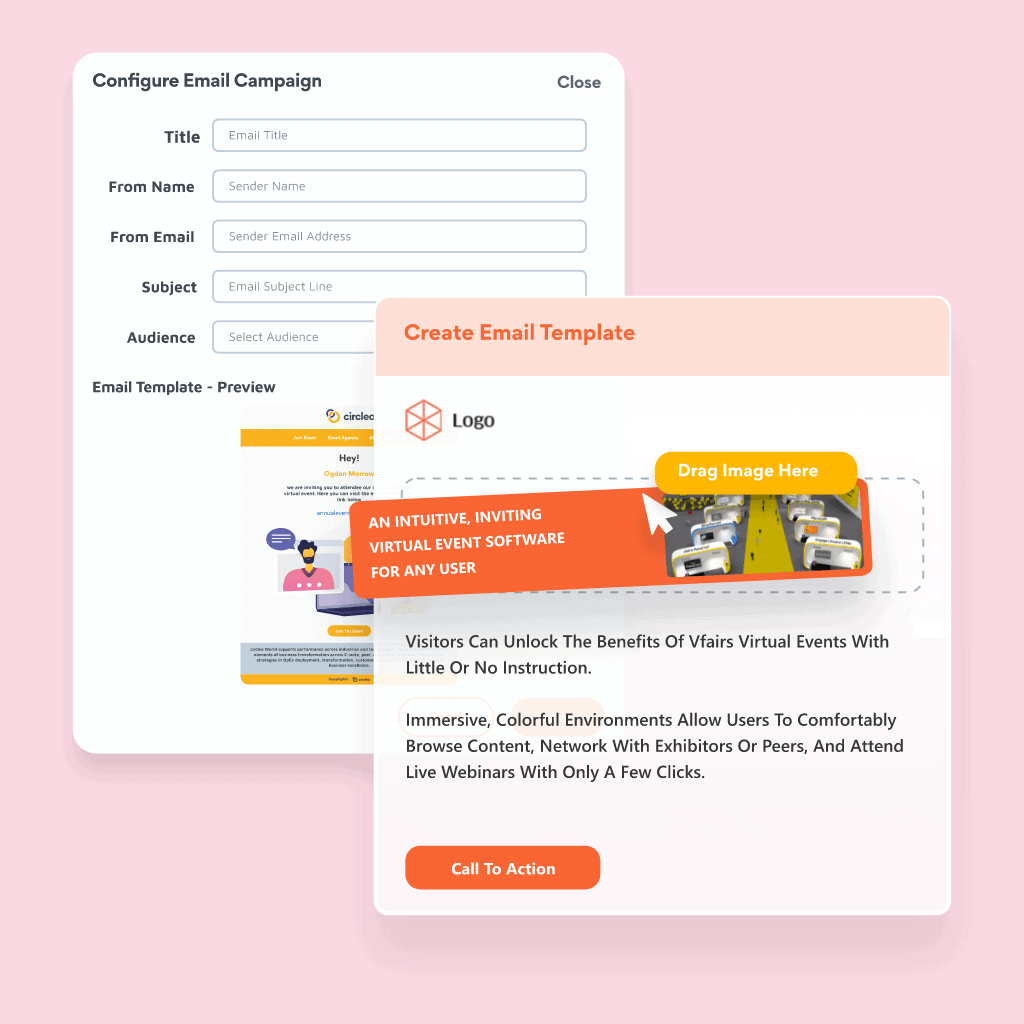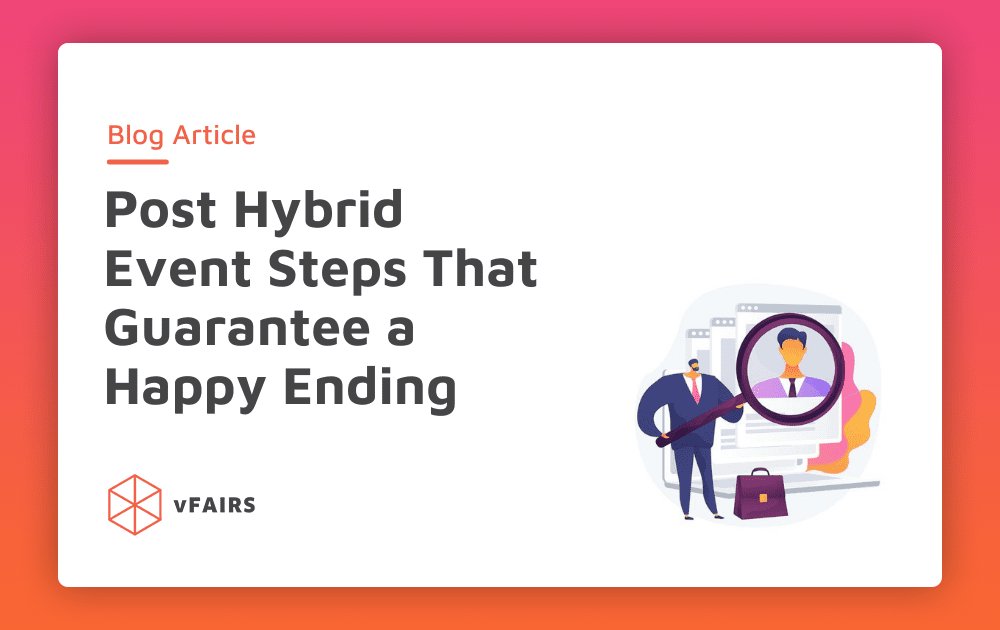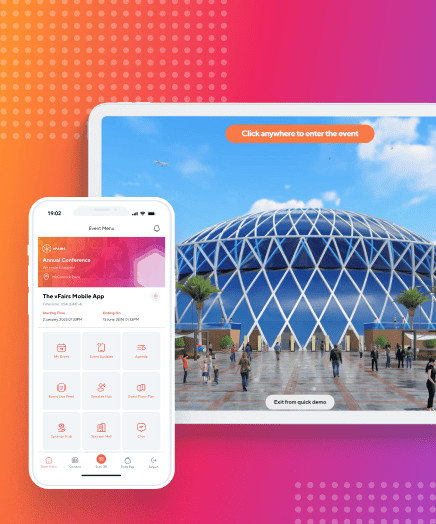Once your hybrid event concludes and you break all engagement milestones, what post-event steps can you take to keep your audience engaged long after the event is over?
It’s not uncommon to place all the importance of a hybrid event on pre-event marketing. However, post-event management is critical to nurturing attendee relationships. You also need to measure the impact your event created. After all, imagine not thanking a guest after they’ve spent hours getting ready and making arrangements to attend your big day. Not polite, am I right?
Post-event follow-up strategies are like the middle child of a hybrid event planning journey – largely ignored but often the smartest of the lot.
We don’t want you to ignore it so we’ve compiled some genius post-event steps you can take to make sure you’re juicing out the most from your event.
Post-Event Steps: What To Do After Your Hybrid Event?
1. Analyze Reports
Always remember: stats speak louder than words. A huge benefit of hybrid events is that data can be gathered more efficiently and accurately, for the virtual part of the event. Combine it with observations from the live event and you have gold.
Use it to your advantage. Track how your attendees engaged at your event to get valuable insights. Visualize their journeys, or compile the live stats reports you got during the event and put them together to see if you notice any trends or patterns that could be useful to you. These help you improve on your future events.
For example, you can compare the number of people who registered to how many people actually logged in on the day of your event. This will help you get an idea of how effective your pre event communications were.
You can also track macro trends like webinar attendance and traffic to various areas within the event venue. This can help you deduce what topics resonate best with your audience in general.
Moreover, you can export individual user journeys and share them with your sales team so they have additional insights on specific areas of concern.
You need a holistic post-event report that you can present to your upper management and event sponsors, exhibitors and other stakeholders. Track useful metrics such as attendance rates, individual user journeys, questions asked, downloaded content, webinar views, CTA clicks and poll answers to help you understand what worked and what didn’t. Was there a particular area your audience found more value in? Can you build on that for future events? These event reports help guide your strategy for the next event.

Again, your virtual event will give you a more detailed analysis as compared to your live event. But get all the stats you can from your live event, and use them to your advantage.
2. Extend Your On-Demand Period
While your live event is only open for a few days, your online venue can extend the life of your hybrid event. A critical post-event step would be to ensure your event runs for a longer period of time and has on-demand content.
Having a longer on-demand period means that the event stays open for the attendees to visit like they would on a live day but presentations would be pre-recorded and features like chat may be disabled.
Utilize your on-demand days during this time so it’s easier to reach people who might have missed out on the live day activities. Use your collected data to email and follow up with attendees who registered and could not make it on the live day. This is a huge benefit of hybrid events because you can keep on driving ROI long after the actual event has ended from the virtual part of your event. Attendees can access webinars, sessions and discussions in case they missed them – adding value to the overall event experience.
Pro Tip: Don’t forget to market your on-demand event via your social media channels and email campaigns. Use these channels to draw people to your event even after it’s over.
3. Plan Ahead
There’s no such thing as starting too early. Debrief based on the data you gathered after the event, and start strategizing for your next event. For example, if you are a university representative and wish to host another open day for the next semester, it’s a good idea to analyze your findings and improvise for the coming session by picking an event date or week where you know the maximum number of students can join in.
Community building is equally important. After looking at the attendee engagement trends and figuring out what works, you can take a number of steps. Create campaigns, marketplaces and communities to nurture prospective attendees for your future events. These steps can provide future business opportunities, create awareness and generate word of mouth. This creates a cycle that provides high-quality leads and can help generate more business.
Post Event Steps: Data Collection and In-Depth Follow Up
4. Gather Feedback
Solicit attendee feedback using emails or while logging out in the form of surveys and comments. This will allow you to understand how well your event performed along with the shortcomings. It is essential to carefully curate your surveys and feedback forms.
5. Stay In Touch
Begin with a thank you email addressed to your attendees. A good rule of thumb is to debrief and highlight key takeaways from the event and provide context and insight. Make sure you tap into this personal touchpoint! A little goes a long way and post-event email campaigns leave a huge impact on attendees.
Pro Tip: Don’t forget to follow up with leads. Follow-ups are key to deepening attendee relationships.

6. Offer Resources
Add value to your event for your attendees by providing a database of downloadable material such as videos, sessions and other resourceful material. Similarly, allow exhibitors and sponsors to reach out to attendees after the event has concluded.
Content on your virtual venue is ever-green. You can use it to engage people post-event and add value to their overall experience.
7. Make Your Event Eternal!
It’s the age of social media and you have the perfect opportunity to use it to your advantage and reach not just your primary audience but your secondary and tertiary audience as well. Immortalize your event in the form of social media content and highlights. This allows attendees to remember the highs of the event, what they learned, the networking possibilities, and the memories – perhaps of the various fun gamification features.
A critical post-event step would be to add snippets from the event on your social media during, before, and even after the event in the form of teasers, short clips, memorable moments, and images.
Pro Tip: Use content and highlights from your current event to create hype for your next events. People see what you delivered in the last event, and they wouldn’t want to miss out on the next!
Final Thoughts
To summarize, just organizing a top-notch event isn’t enough. You can elevate it further by putting thought into your post-event steps. Leverage data-driven activities to make the most out of your hybrid event experience. This includes:
- Prompt follow-ups with promising leads
- Staying in touch with your attendees via emails
- Regularly updating your social media content
- In-depth post evaluation of your event
Want to Learn More About Hybrid Events?
Read the vFairs Ultimate Guide to a Hybrid Event
Download the Guide


